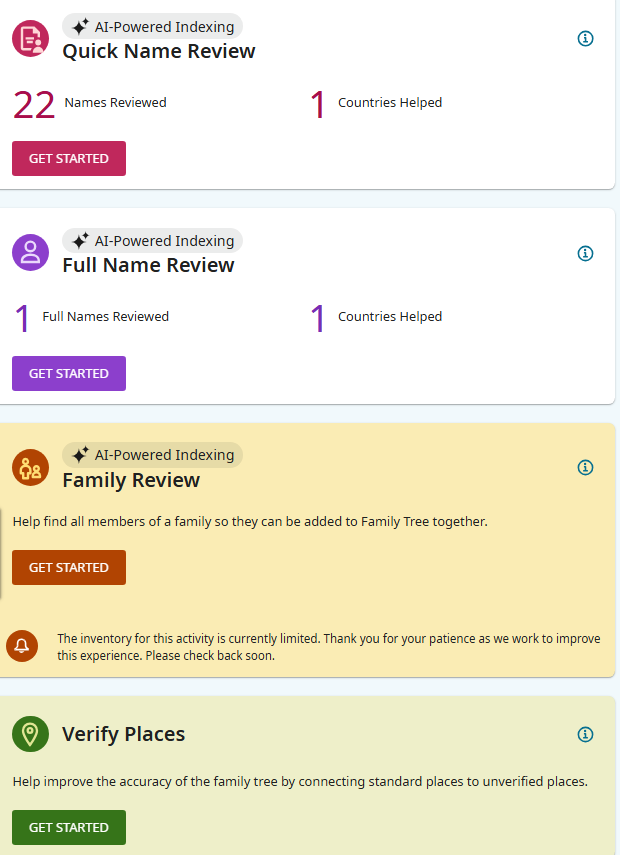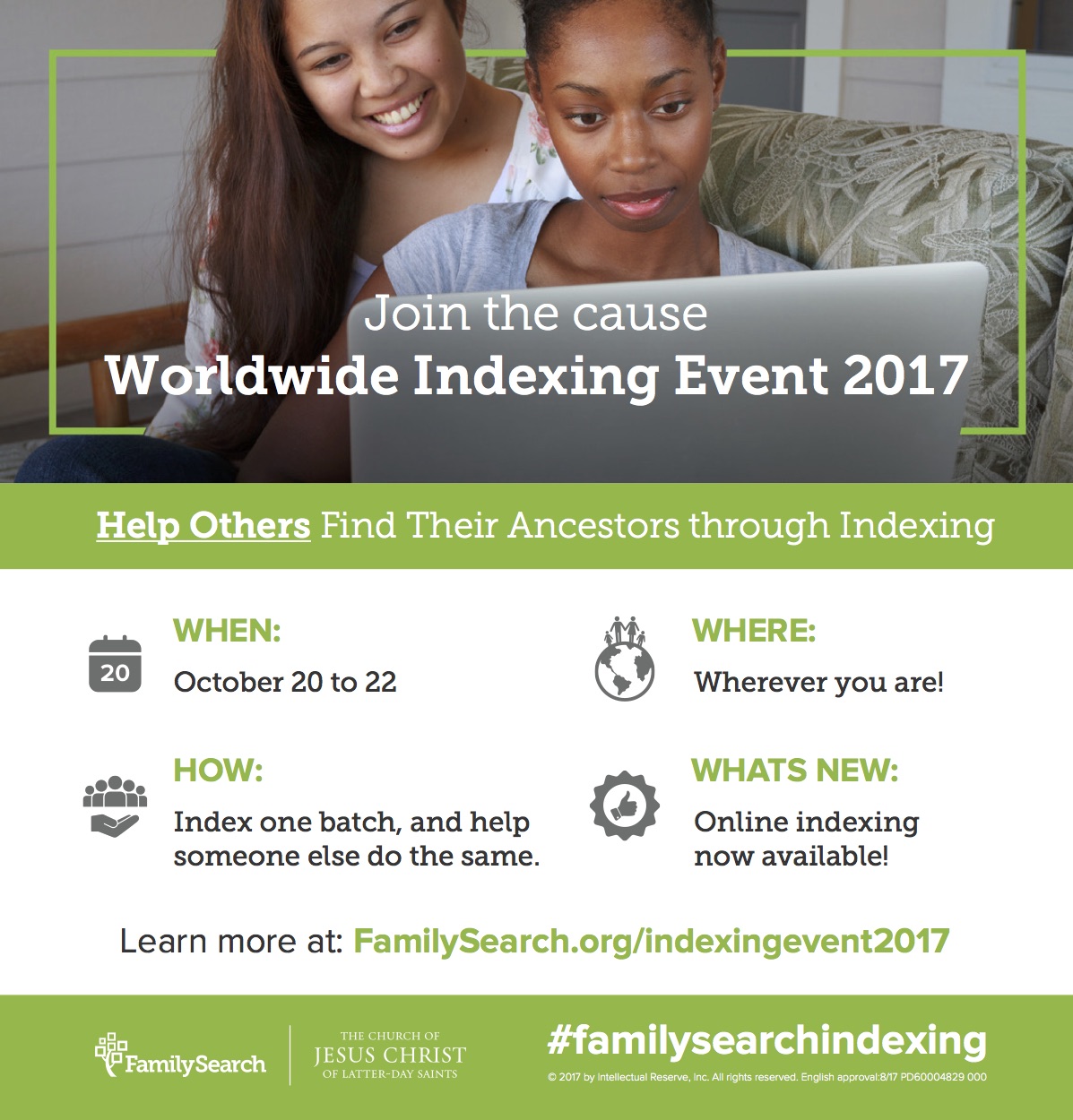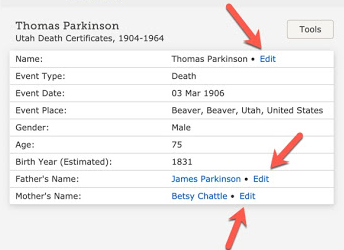New at FamilySearch: “Get Involved” Replaces User Indexing
You could say it’s the end of an era and the beginning of a new one – volunteer indexing of FamilySearch records came to a close on April 21, which means that record batches can no longer be checked out for indexing as they have been in the past.
Why the end to traditional indexing?
First, a bit of background about the records we see online at FamilySearch, Ancestry, and other sites. At some point those records were found somewhere in the world, such as in churches, archives, cemeteries, government offices, etc. Then the records were digitized and placed online so we can see them. But only a fraction of the records have indexes, or readable summaries of important names, dates, and places – and searching through online records without indexes can be very time-consuming.
That’s why the volunteer indexing effort was started. (Before “indexing” the process was known as “record extraction.”) Many volunteers spent cumulative years examining records and typing the essential information they saw, to create indexes online. The problem is that records are being digitized far faster than human volunteers can keep up with indexing. That’s where computers and advances in artificial intelligence (AI) come in: it turns out that AI can find and record key information from records, millions of times faster than humans. So FamilySearch wrapped up indexing by people earlier this week, to focus on the AI efforts.
So what can we do now?
The interesting dilemma with AI-based indexing is that while it’s incredibly fast and efficient, it’s not always as accurate as it should be. Now we have the opportunity to “Get Involved” in FamilySearch’s efforts to train computers to index more accurately. In the Get Involved menu in FamilySearch, you can do tasks for randomly assigned record collections, reviewing what computers have done and suggesting corrections where needed.
Below is a list of the Get Involved tasks, with descriptions and links to where they are documented in The Family History Guide:
- Quick Name Review – review first names and surnames
- Full Name Review – review complete names including titles
- Family Review – look for all members of a family in selected records
- Verify Places – check for standardized place names

There is also a Record Hints Review in FamilySearch that is currently in beta stage.
What’s the difference?
In addition to greatly accelerating the process of creating online indexes, Get Involved simplifies the volunteering experience as compared to traditional indexing. There’s no checking out batches, worrying about completion times, or having to digest a lot of guidelines about how to read the record content. The focus now is much more about reading handwriting, to make sure names, dates, and places are recorded accurately. FamilySearch has some handwriting examples you can study, and The Family History Guide has a comprehensive set of handwriting resources in Goal 2 of the Get Involved Project.
We hope you get involved with “Get Involved”!





